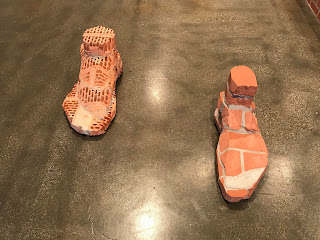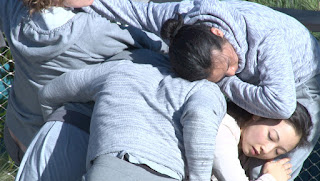Event 5 (Extra Credit)

For my fifth event, I went to the Hammer Museum and attended Judith Hopf's exhibition on June 8,2017. Featured in Hopf's Hammer Project are a number of recent sculptures made of bricks which are materials affiliated with architecture and not typically found in contemporary sculpture. Brick-Foot At my first sight, I saw two variations of feet, both titled Brick-Foot . One is the left food and the other is the right food. The shapes of these two feet are almost identical. The artworks were made by using different orientations of bricks. We can see the surface structure of the bricks from the left foot while the right foot shows people the internal structure of the bricks. Brick-Ball Brick- Personification of a problem As I continued to walk through the gallery, I saw another two brick works from this series on the left size of the gallery, a brick ball titled Ball in Remembrance of Annette Wehrmann , and a sculpture called Personification of a Problem ....




